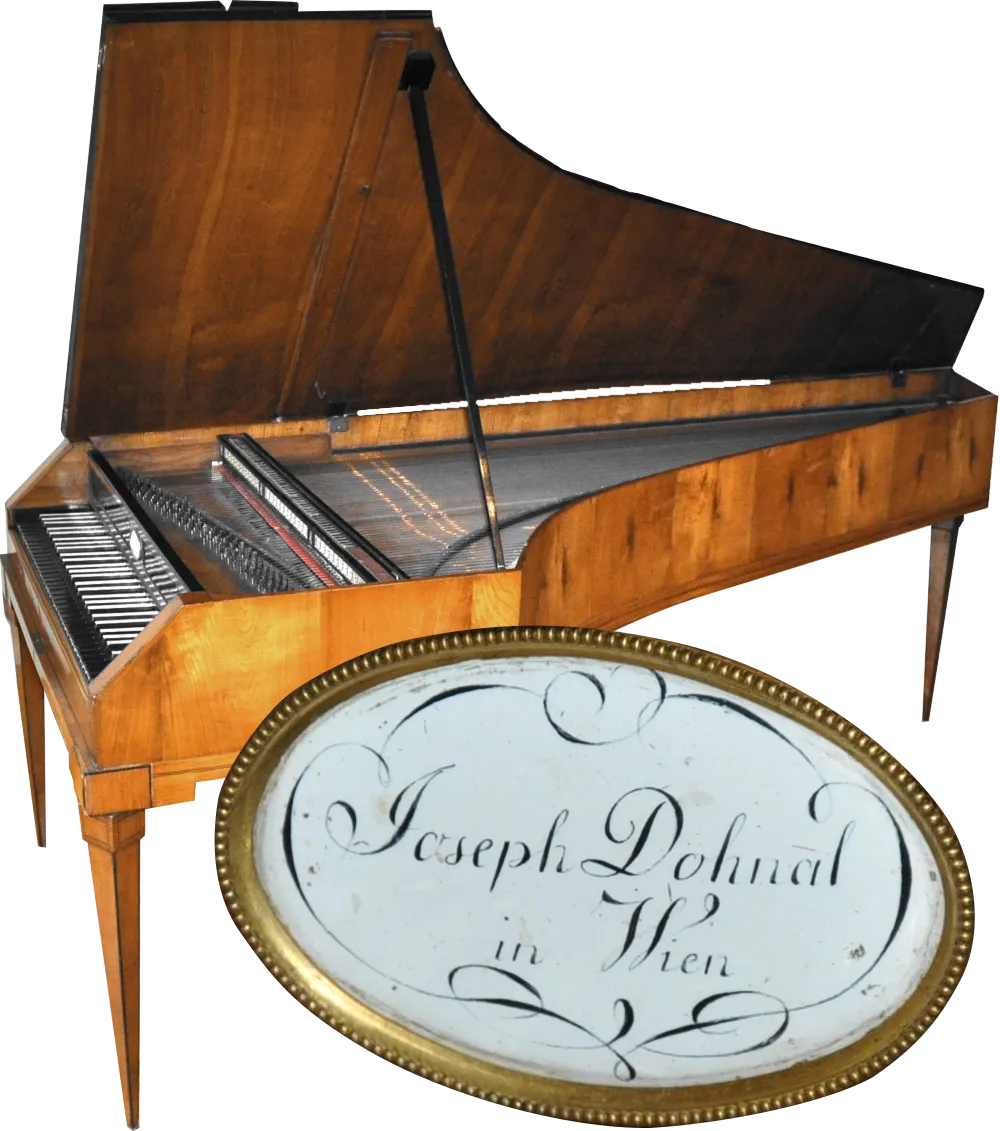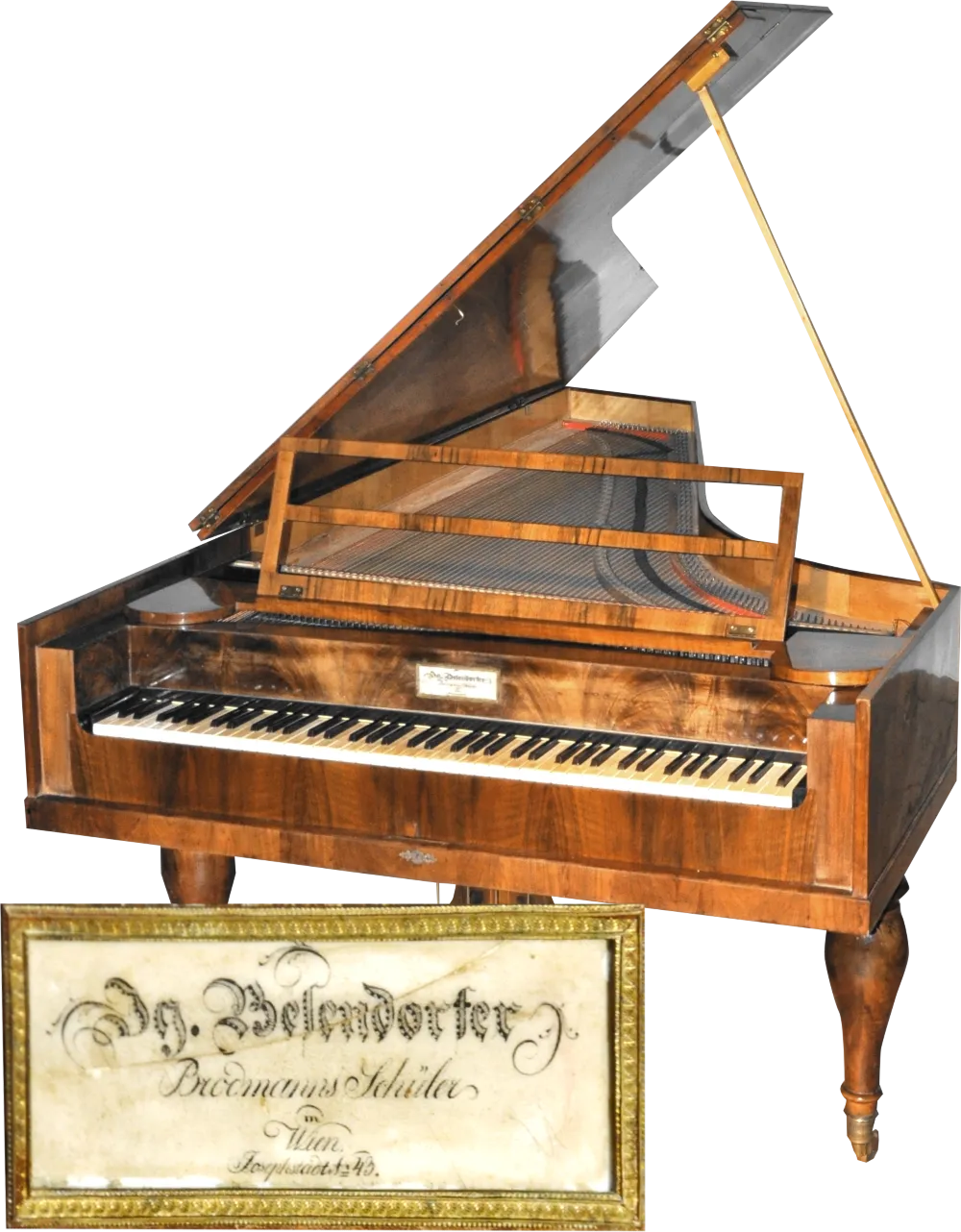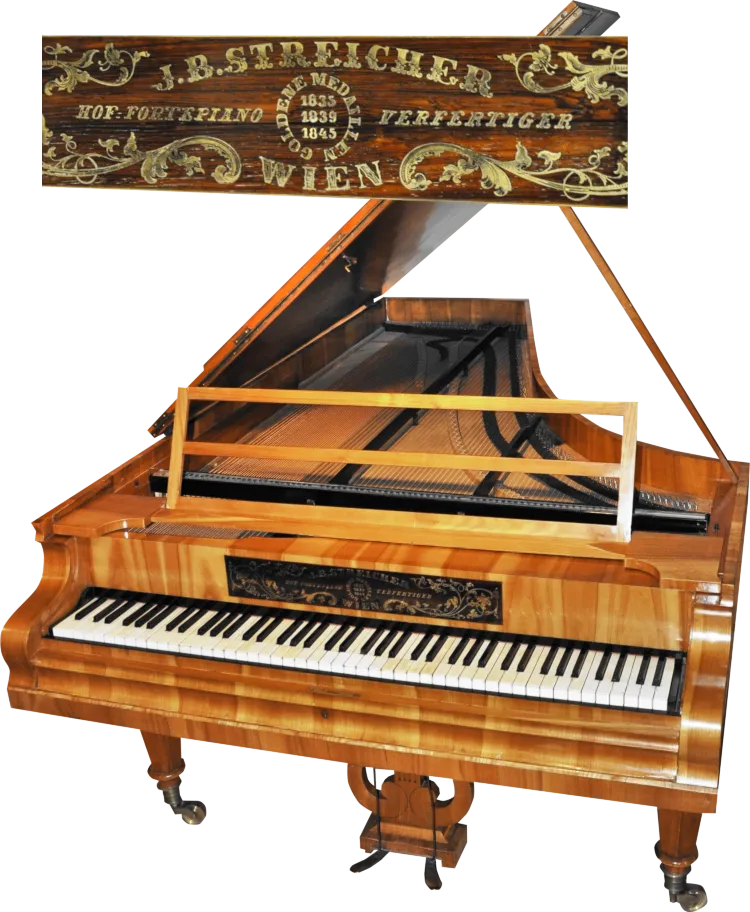Kremsegg Collection #1 for Pianoteq
The Kremsegg Collection for Pianoteq is a selection of historical pianos and pianofortes from the 18th and 19th century, curated in the prestigious music instruments collection of the Kremsegg Castle in Kremsmünster, Upper Austria.
Ideal for historical performances and modern productions, these colorful and dynamic instruments are perfect for musicians, composers, and sound designers alike.
The Kremsegg Collection #1 includes four instruments:
- Joseph Dohnal Pianoforte (1795)
- Ignaz Besendorfer Grand Piano (1829)
- Sébastien Érard Grand Piano (1849)
- Johann Baptist Streicher Grand Piano (1852)
Four additional instruments can be found in the Kremsegg Collection #2.
a Pianoteq instrument pack
Get this pack with Pianoteq Stage (2 packs), Standard (3), or Pro (4).
Buy Pianoteqstarting from 139.00 €
- 4 historical pianos from the 18th and 19th centuries
- Accurate physical modelling of each instrument
- Perfect for Classical and Romantic music
- Versatile for modern compositions
- 32 presets included

Joseph Dohnal Pianoforte (1795)
This five-octave pianoforte – extended to the standard 88 keys in Pianoteq – is an early example of the Viennese piano tradition. With its wooden frame and lighter action, it offers a delicate, clear tone ideal for early Classical repertoire. The instrument’s limited sustain and quick decay capture the distinctive design preferences of the late 18th century.

Ignaz Besendorfer Grand Piano (1829)
This six-and-a-half-octave grand piano was manufactured by Ignaz Bösendorfer (spelled "Besendorfer" on the cartouche), a prestigious Austrian instrument maker who was famously appreciated by the virtuoso pianist Franz Liszt. It delivers a clear, resonant tone, bridging the gap between earlier fortepianos and the more robust instruments of the later Romantic period.

Sébastien Érard Grand Piano (1849)
Famed for its innovative action mechanism perfect for playing virtuosic Romantic works, this seven-octave grand piano by Sébastien Érard displays a balanced middle range and warm bass. Érard's innovations in soundboard design contribute to a clear, powerful tone across the keyboard.

Johann Baptist Streicher Grand Piano (1852)
This 86-key grand was made by J.B. Streicher following the legacy of his grandfather Johann Andreas Stein, and his mother Nanette Streicher, both renowned piano makers. Known for its flute-like treble, warm midrange, and reedy bass, it is particularly suited to the early to mid-Romantic repertoire. Johannes Brahms was a fond owner of a Streicher piano.
Historic craftsmanship meets innovation
The Kremsegg Collection combines the authentic sound of 18th- and 19th-century pianos with Pianoteq’s advanced physical modelling technology. Each instrument is meticulously modelled to reflect its historical construction, while offering modern features like customizable mic placement, tuning, voicing, and numerous other parameters. This makes it perfect for both historically accurate performances and versatile use in contemporary music.
Temperament customization
Each instrument in the Kremsegg Collection comes with a selection of historical temperaments, including Werckmeister III, Neidhardt III, quarter-comma meantone, and the Bach-Kellner well temperament.
Moreover, Pianoteq Standard and Pro users can access the Advanced Tuning window where they can easily customize diapason and temperament, including full support for microtonality.


